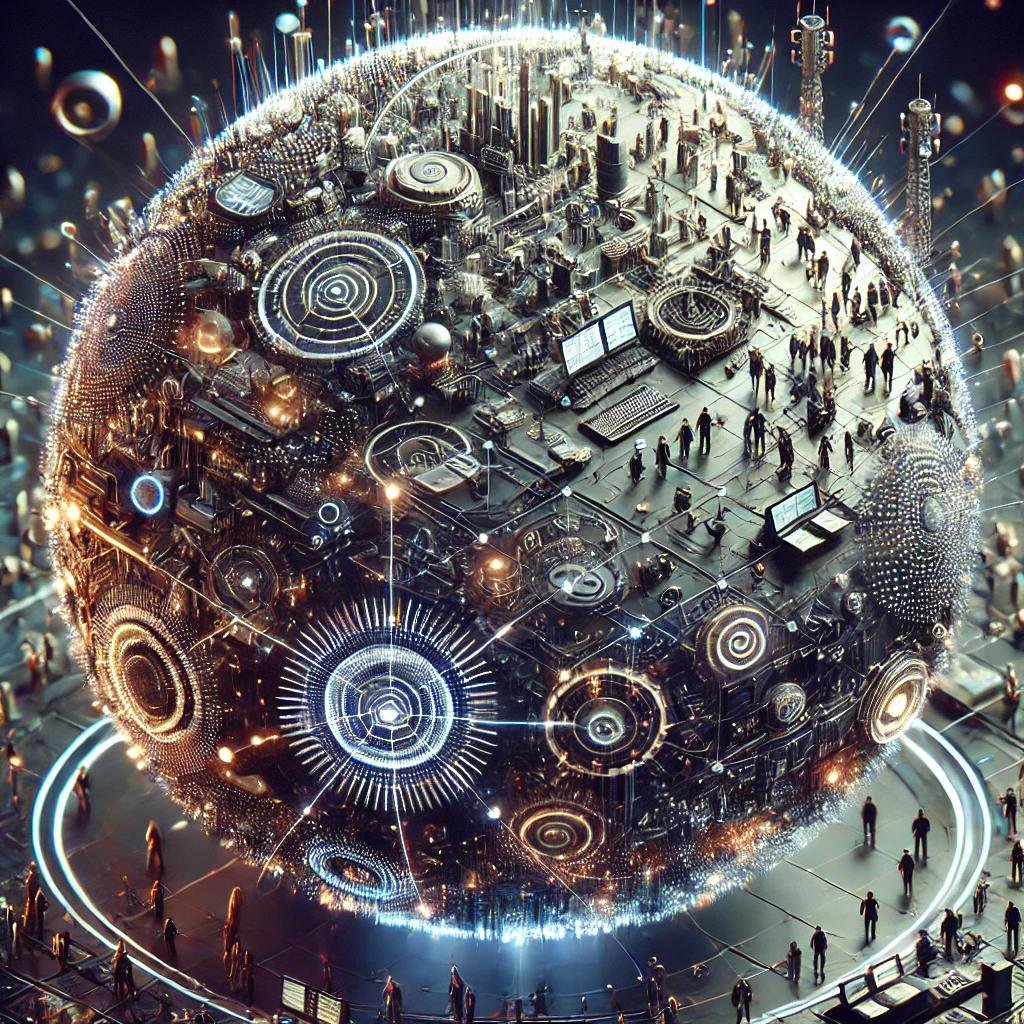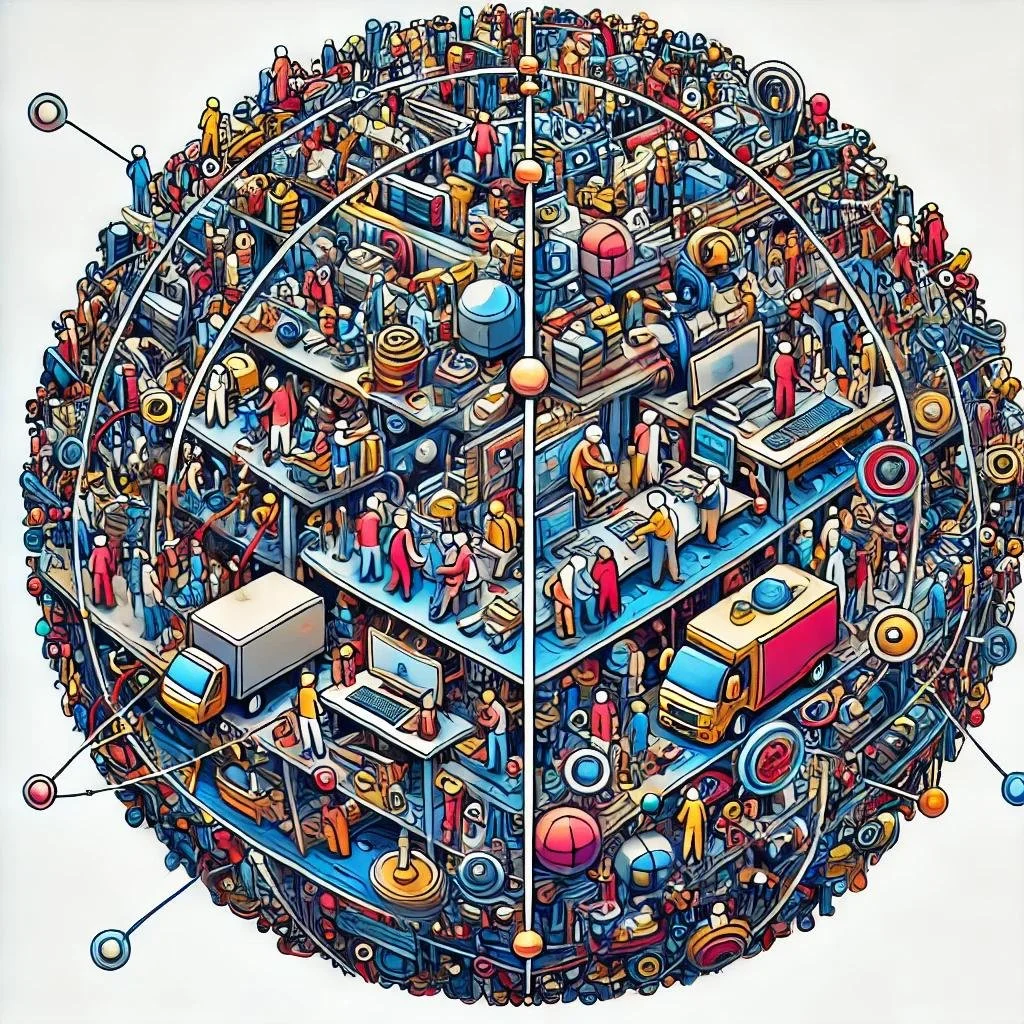“Hey ChatGPT, what does commerce look like?”
Well, I just finished a new book. One of its first readers has described it as “remarkable”. You can grab a copy here if you would like.
I’ve been ruminating on some of the themes I wrote about, and decided to play with ChatGPT. The result is really marvelous.
Oh, I also recently upgraded to the paid version of ChatGPT, so I can ask it to make unlimited images for me. And many of them are very beautiful.
ChatGPT is a tool. It won’t just do things for you. But you can guide and shape its “thinking” process and it becomes a really flexible and powerful creative partner. The images at the end of this sequence are quite wonderful IMHO.
I didn’t just ask it to visualize commerce. That will give you a certain result, but not a particularly inspiring one that I’m not going to share.
Let me walk you through the process and show you what was returned along the way…
In ancient Greece the first philosophers wondered how existence worked and so the study of ontology was born. After Thales, a brilliant scientist and futures speculator, the two most significant figures are probably Heraclitus and Parmenides.
Heraclitus said “you never step in the same river twice”. He saw everything in flux. The river changes from moment to moment. Is it still the same river? We typically think it is today, but that’s because we’ve learned to think about it that way and many (not all) of these ancient thinking problems have been addressed to some degree. Heraclitus wondered if we can be the same people from moment to moment because we are changing. In fact, every 7 to 10 years your cells regenerate (and he didn’t even know that part!). Are you the same person? Of course we think you are, but how is that possible? That’s the kind of thing that Heraclitus wondered about. He saw everything changing, flowing from place to place, never standing still.
Parmenides took the opposing position. He thought, if you describe the universe, how can it be made of parts? And how can it change from one moment to the next? Taking Heraclitus as a point of departure he seemed to say “If we call something a consistent label, it can’t possibly change. So all the change we think we see is an illusion. All is unified, static, changeless, one.”
Between these two poles we find the thinking of Plato and Aristotle, both of whom sought to reconcile the ever-changing and static qualities of reality, balancing one and many, universal and particular, unity and change, each in his own way. But it took a lot of deep thinking and careful debate.
Heraclitus and Parmenides are still fascinating to philosophers today. Even though they lived hundreds of years before Christ, they exerted significant influence on the work of Hegel as late as the 1800s and Heidegger well into the 1900s, both of whom are highly significant thinkers. And they have provoked my thoughts as well, which you can read about in the new book.
Commerce, as far as I can tell, is what happens when the static unity of Parmenides is animated beneath the surface by the flux and flow of Heraclitus. I got ChatGPT to create some truly stunning images that illustrate this, and I didn’t stop until I got what I was after. Here’s how I did it…
“Create an image of a perfect circle with a network of internal flows.”
“Make the flows go all over and criss-cross and not just point toward the center. Make the network of flows fill the entire circle so there is no space inside uncovered by them.”
“Make All of the flows much straighter and give them consistent thickness, kind of like blood vessels. Make it less realistic and more like a drawing. Make it two-dimensional.”
“Make it even more like a pencil drawing.”
“Keep that style but make the flows criss-cross, consistent size, and not all point to the center.”
“Now Make the flows clearly part of a social network with organizations and people at the hubs of the flows.”
“Make the people more realistic, show the tools and artifacts of commerce, and make the picture more immersive with a three-dimensional sphere. Make the scene evoke the hustle and bustle of interconnected human life.”
“That's great. Can you make three more on the same theme? But with slightly different styles?”
“Make an image similar to the last one but in color.”
Isn’t that fun? My 2 favorites are definitely these:
They both feel to me like a true reconciliation of Parmenides’ timeless one and Heraclitus’ ceaseless motion and change.
Give it a try sometime.
There’s a concept I’ve heard about called a “psychotechnology”. It refers to any technique that changes the way our brains process information. Examples include writing, mathematics, computing, etc. They help us but also change the way we process information. They don’t think for us. ChatGPT doesn’t think for you. You must still create. But it can make you a stronger creator and bring your ideas to life, so long as they are based on an innovative vision of human potential. I was delighted to see commerce brought to life in such a vivid way, along with some of the most fascinating philosophical ideas of the past. A powerful creative partner.
Curious to know what that’s all like in print? Order your copy here.















